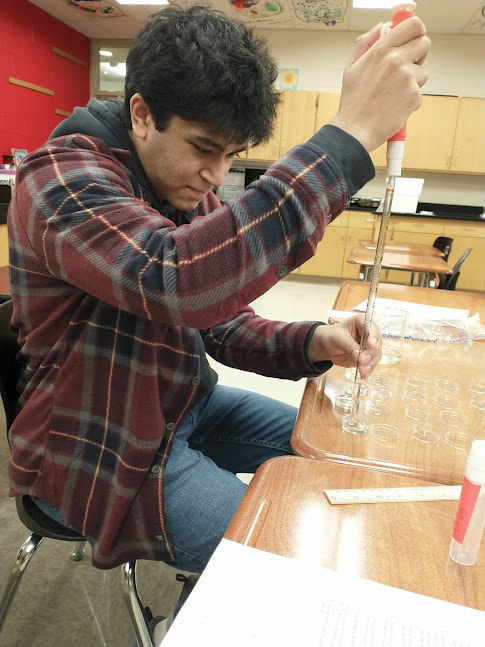 Hey everyone, it’s Rohan here, and it's great to see you all again! We have just finished week 5 and are moving onto week 6! The time is really “flying” by! Over the past couple of weeks we have been working through our kickoff experiment projects, and my research question was How do Rhodiola and Head Trauma affect Anxiety in Fruit Flies? Weeks prior I had sorted 30 male and 30 female flies, using CO2 gas to knock them out, each into 4 different vials, and the vials were a control, stressor only, drug only, and stressor and drug vial. After these flies lived in their respective vials for a week, I needed to test the anxiety of my flies, which I did using an “Open Field Test”. The open field test puts 3 files into dishes and watches their movement. The closer they are to the side of the dish, the more anxious they are, and the closer to the middle they are, the less anxious they are. After taking pictures, collecting my data, and analyzing it I put together a presentation for my peers to learn about my kickoff experiment. My results were inconclusive, yet despite this, I learned so much! I learned how to properly run an experiment using an assay and how to collect and analyze various kinds of data. Can Bilberry Extract ameliorate the negative effects of induced heat shock on Drosophila melanogaster health, as measured by negative geotaxis? 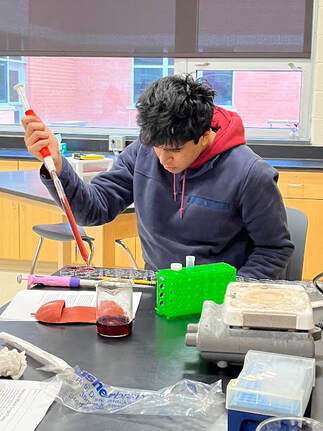 We are currently transitioning to our independent project and after a long day of planning it out, I have decided to investigate the question, Can Bilberry Extract ameliorate the negative effects of induced heat shock on Drosophila melanogaster health, as measured by negative geotaxis? Bilberry Extract contains a chemical compound called Anthocyanins. Through my work in critical care medicine on Ambulances, I have discovered that heat shock/stroke can be extremely detrimental to humans and there are virtually no fast acting medications that work against the adverse effects of heat stroke/shock. One part of Anthocyanins is that they can act as an anti-inflammatory supplement. This part of Anthocyanins could mitigate the effects of heat shock on human bodies as they tend to cramp up and cannot move after heat shock. By giving them high doses of Anthocyanins, they could then be relieved, internally, of all the inflammation caused by the heat shock and thus improve their mobility. To measure their mobility, I am using an assay called Negative Geotaxis which essentially measures the movement of flies in a short time frame. Over the next couple of weeks I will be running this experiment and I am very excited to see the results. Who knows, maybe one day the research I do here could save lives in the community! See you all next week!
0 Comments
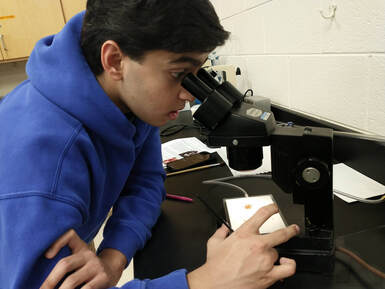 For my independent project, I wanted to conduct an experiment that would be meaningful in the world of cognitive neuroscience, since I have family members with neurological conditions such as Autism and Parkinsons. I wanted to model these conditions in fruit flies, and after reading papers, brainstorming over weekends, and receiving some help from Dr. Purdy, Dr. Leystra, and my fellow TRIP peers, I finally decided on an experiment. I plan to test the effects of Huperzine-A, an active ingredient found in memory supplements, on memory in teens with some form of memory disturbance, such as Autism or ADHD. I plan to model this experiment by exposing flies and larvae to constant light to create memory disturbance. Then, I plan to conduct a larvae memory assay to assess changes in memory. I will also measure how memory was affected in flies without memory disturbance as well. Overall, I am very grateful for what I have already learned in this program so far, and I can’t wait to conduct my independent experiment!
Hello everyone! I can’t believe it’s now been more than a month since I first walked into the TRIP lab. I’ve already learned so much about different scientific equipment and the process of experimental design during this time! In these past couple weeks, I’ve wrapped up our introductory experiment and began the process of conducting my independent project! In my introductory experiment, I tested the impact of melatonin and disrupted circadian rhythm on the mood of flies. After conducting analysis, I concluded that melatonin led to declines in fly social interactions. On the other hand, the stressor (constant darkness) caused the flies to have increased social interactions. I found this unexpected, considering the flies would have difficulty interacting on a day-to-day basis while shrouded by the aluminum foil cover that was over them. Moving forward, I’ll be working on my independent project. Coming into the program, I knew that I wanted to study the impact of some kind of air pollution on fly development. In the past two weeks, I’ve honed in on a research question: “What is the impact of short term, acute exposure to a wildfire smoke, methane, and volatile organic compounds (VOCs) mixture on organismal memory?” “What is the impact of short term, acute exposure to a wildfire smoke, methane, and volatile organic compounds (VOCs) mixture on organismal memory?”
TRIP has been very exciting with Dr. Purdy, Dr. Leystra, our TAs, Keith and Austin, and of course my other TRIP peers! I’ve learned so much so far!
Woah! I can’t believe we are already almost halfway through our TRIP! These past few weeks have not only been about getting to know the lab and basic procedures with fruit flies, but also about getting to know our peers, TAs, and instructors better! We started off by learning how to knock flies out and sort them by gender. We learned how to make good presentations and presented our kickoff experiments to the group. Oh! Looks like I forgot to mention the kickoff experiment. 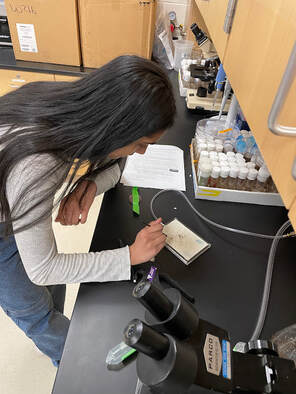 For my kickoff experiment, I tested the effects of Black Cohosh and a disrupted circadian on female fertility. Black Cohosh is a natural herb which is used to treat menopausal symptoms and circadian rhythm is a 24-hour cycle that all bodily functions follow. Since I don’t always eat and sleep at the exact same time every day, I wondered how this might affect female fertility. While doing this experiment, I learned about and used female fertility assay, how to count embryos on a grape plate, and how to collect and analyze scientific data. But most importantly, I found this to be a very humbling experience: I realized that although I might have a small background knowledge in science, there is always so much more to learn about! I decided to test how curcumin, a polyphenol found in turmeric, affects the inflammation caused by a high fat diet. 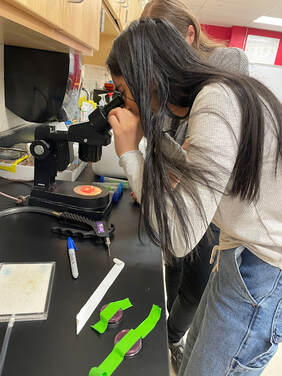 Last but not the least, we just began to discuss our independent projects. I decided to test how curcumin, a polyphenol found in turmeric, affects the inflammation caused by a high fat diet. I personally grew up under the impression that turmeric was the solution to every problem (my family basically uses turmeric in everything). I have wondered what this actually does to the body and how this might affect, and potentially counteract the effects of inflammation caused by a high fat diet. In the future, I also hope that this research provides a segue into how turmeric can counteract effects of inflammation caused by diseases like Inflammatory Bowel Disease and Colon cancer. 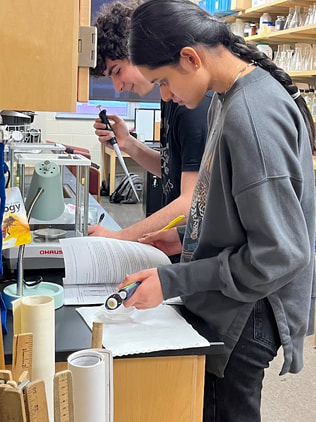 Hello everyone! My name is Maegan Sojan, and I’m currently a junior at Great Valley High School. A little about me - I love baking all kinds of desserts, am an avid crossword puzzle enthusiast (especially the NY Times Minis), and love watching movies with my family! Within my school community, I’m part of a diverse array of clubs and activities. For the past two years, I’ve served as an officer for our Women in Science and Engineering (WISE) Club, cultivating a community of girls with a passion for STEM. I’m also an active member in our school’s GirlUp Club, Science Olympiad, NHS, and the student forum (part of our student council). Outside the classroom, I’ve been able to explore and develop my interests in women’s advocacy, specifically through a program called the Girl’s Advisory Board (GAB). Here, I’ve learned about the various needs of women and girls in Chester County like poverty, domestic violence, and reproductive care. Through the program, we’ve been able to tackle some of these issues by awarding grants to local nonprofits and volunteering at them, as well. Through advocating for others, it has sparked an interest in me to make healthcare accessible to all, regardless of race or socioeconomic status. 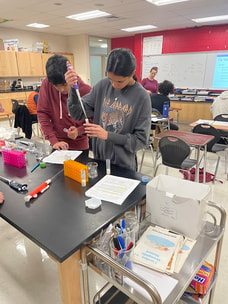 Being involved in activities that focus on improving gender equality, I’ve taken an interest in pursuing a career in the reproductive sciences. However, I know there are a plethora of pathways in medicine and wouldn’t want to limit myself to just one specialty. Through TRIP, I hope to discover other careers that I may like just as much as reproductive healthcare, or maybe even weed out fields I don’t particularly enjoy! As a result, I’m excited to conduct my initial experiment on the effects of licorice and soap on the fruit flies’ mood. I’m also eager to further enhance my lab skills and become more comfortable in making mistakes. In my previous science classes, I haven’t had access to such fancy equipment and always operated under the guidance of my teachers. I hope to navigate my way around the lab and this newfound independence as the weeks go on! My first day in the lab was nerve-racking, exciting, and adventurous, all at once. I got to know all of the students in my session a little better through the icebreaker, but unfortunately I wasn’t lucky enough to win the WAWA gift card! Afterwards, we were given a tutorial on how to use the micropipette and were allowed to practice on our own, before using them to set up our own vials. At first, I was a little shaky in setting up the vial, but with each round of micro-pipetting, mixing, and measuring, I became more comfortable in creating my treatments. With even just the four vials I set up, I quickly fell into the rhythm of finding my way around the lab. I have to admit, the solutions and dilutions packet we were given to work on was definitely not the most exciting, but I look forward to completing those problems with ease towards the end of the program! With even just the four vials I set up, I quickly fell into the rhythm of finding my way around the lab. Overall, my first day couldn’t have gone better! I met so many new people, and the atmosphere was very lively - with all of us enjoying the music while we worked. I can’t wait to go on this journey and take you with me; thanks for reading and I hope you stick around!
Hello everyone, my name is Rohan Ramprasad and I am very excited to be a part of TRIP @ WTHS’23!
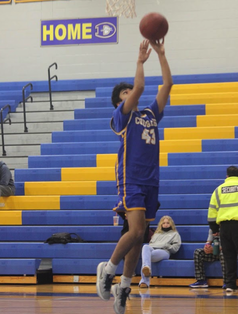 Apart from my life in academia, I love to play basketball whenever I get the chance. I played High School Basketball for Downingtown East for 2 years and continue to play pick-up hoops in my community. I also keep in touch with my cultural heritage by playing the classical “Carnatic Flute”, a 8-hole bamboo instrument originating hundreds of years ago in South India. My favorite cuisine apart from Indian food is Mexican food, and I love eating Chipotle whenever possible.
|
Archives
April 2024
Categories
All
|
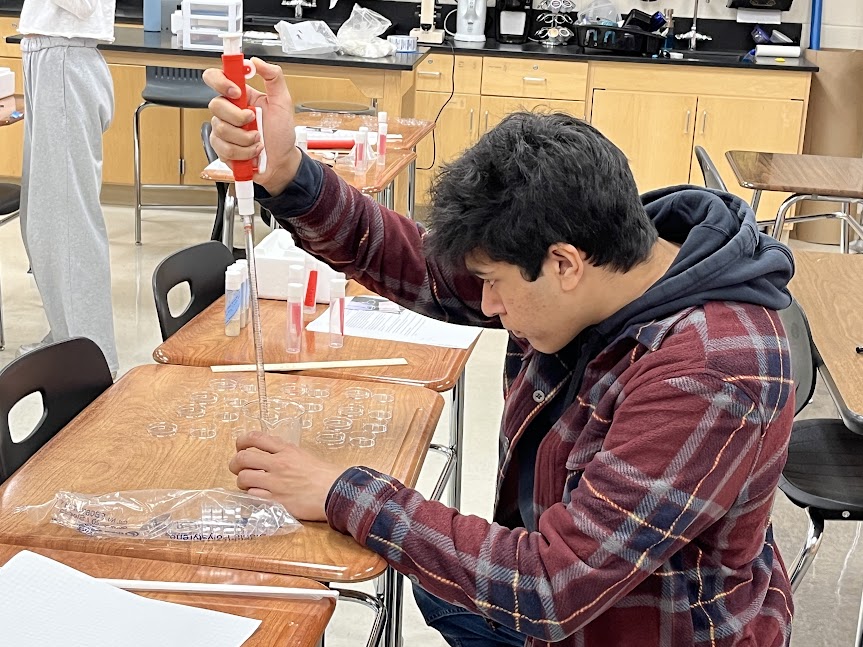
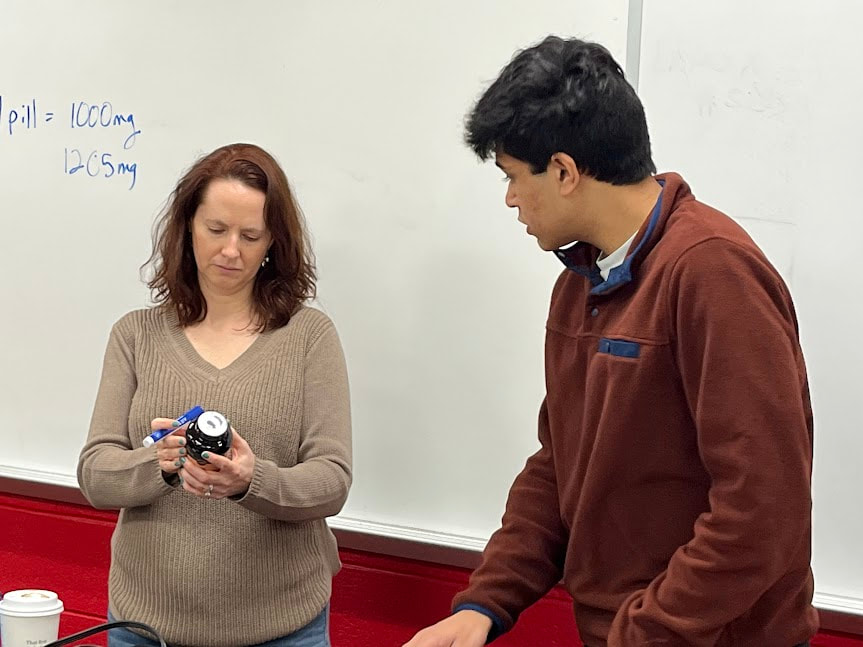
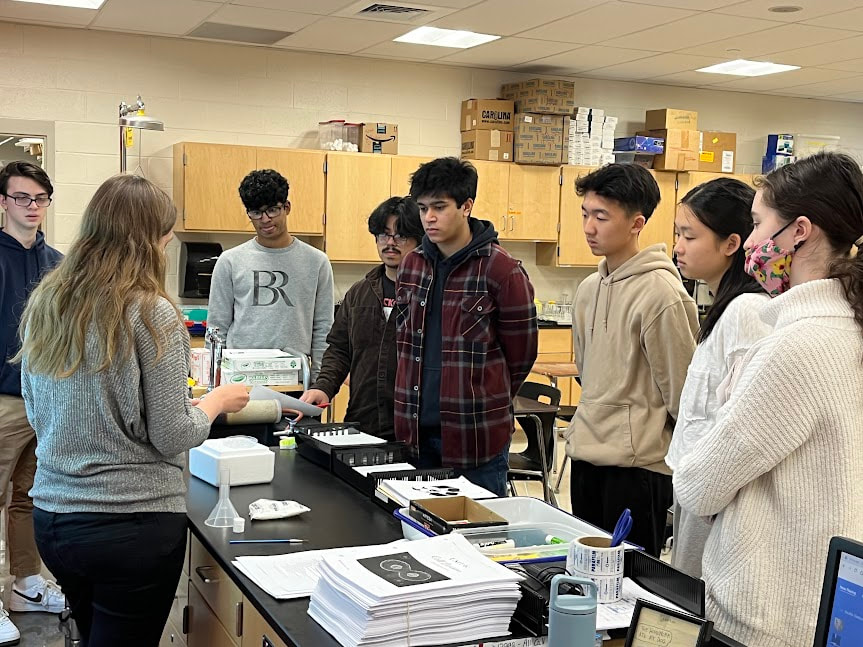
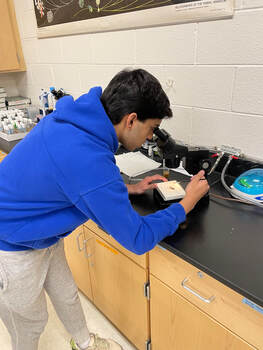
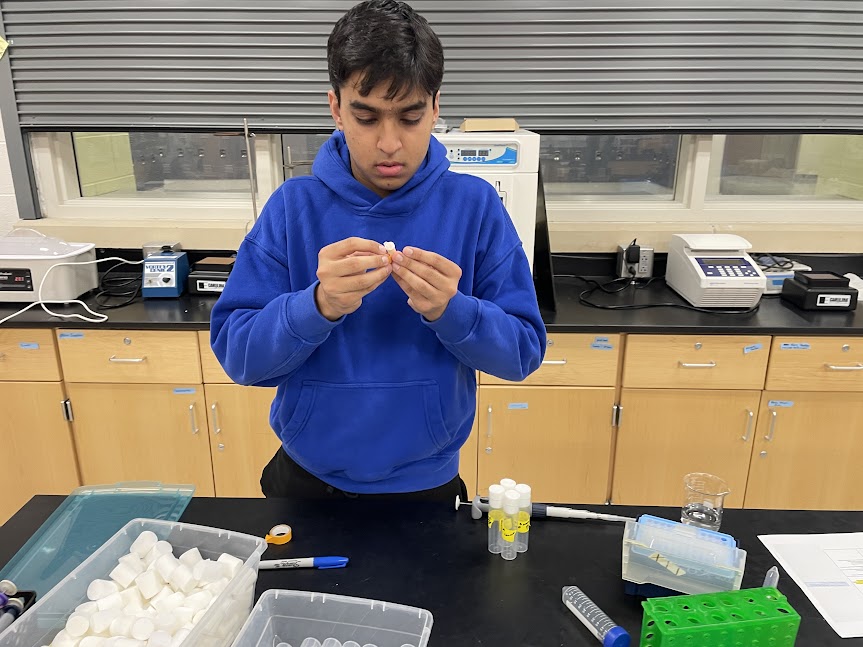
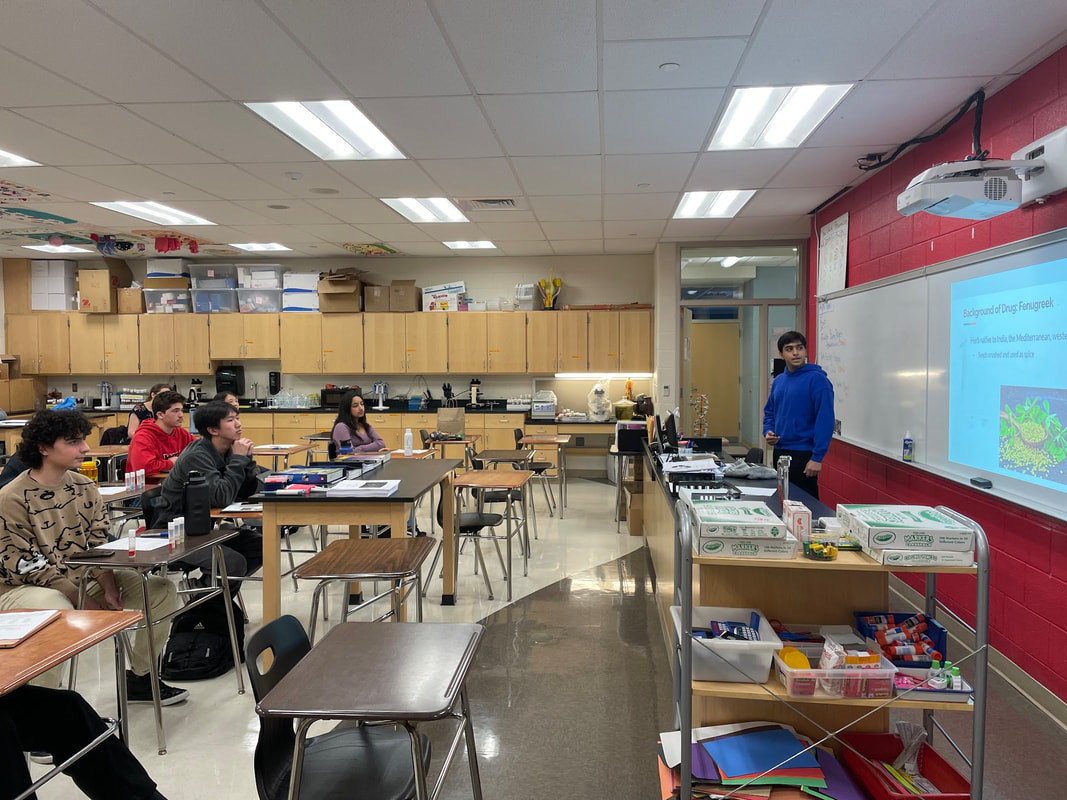
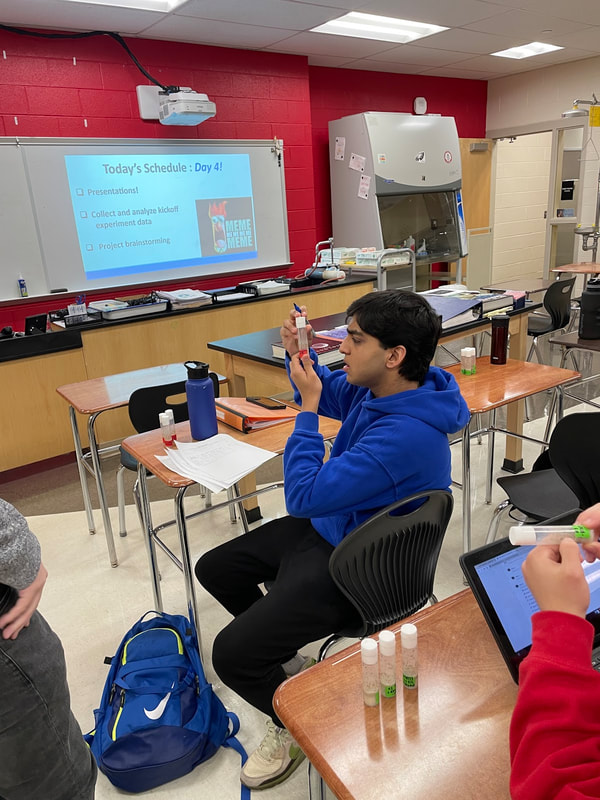
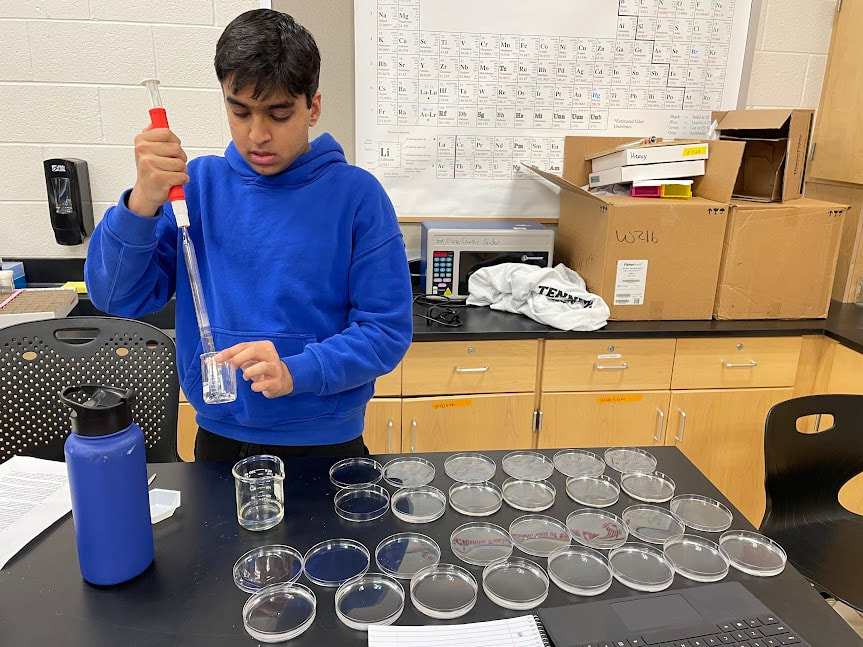
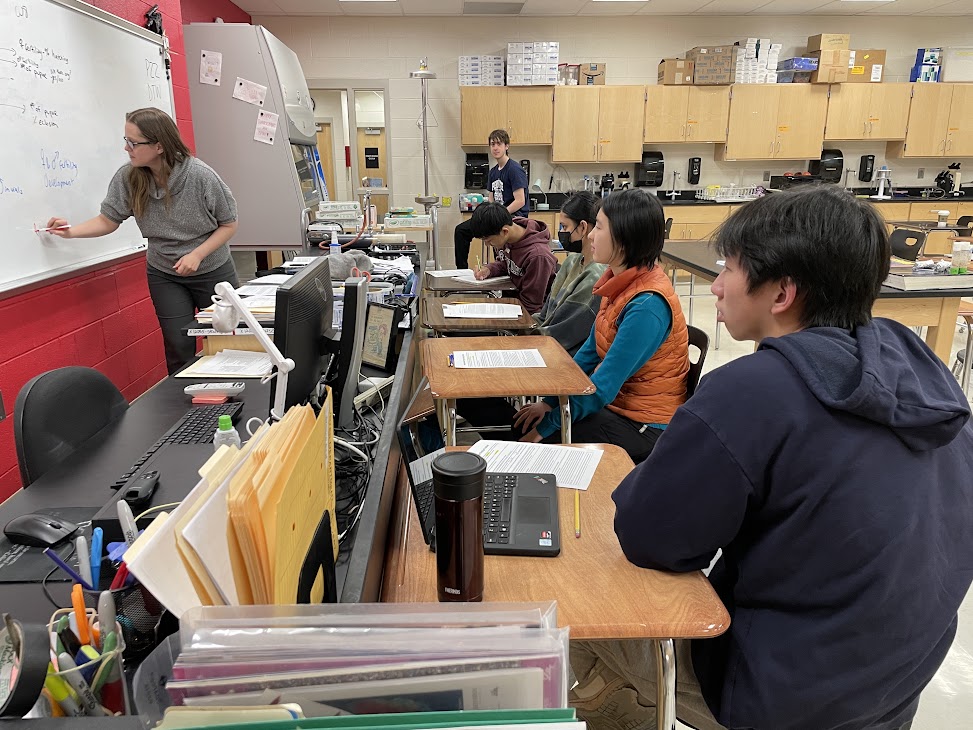
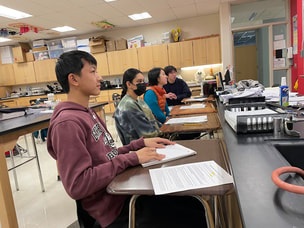
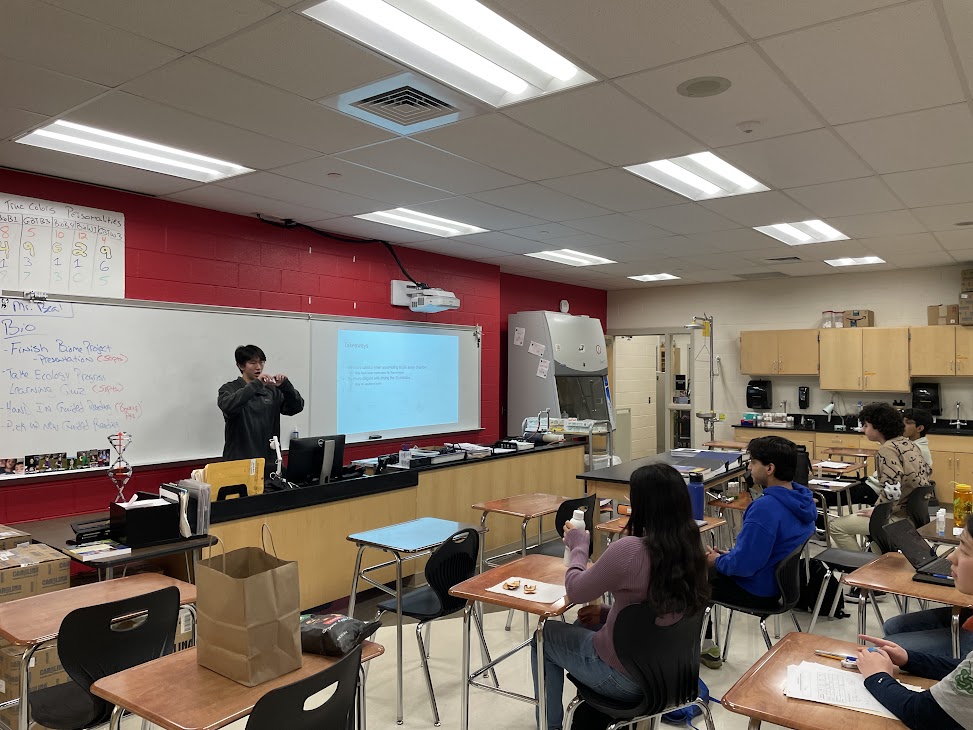
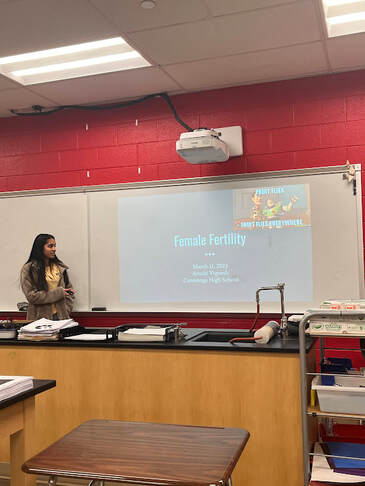
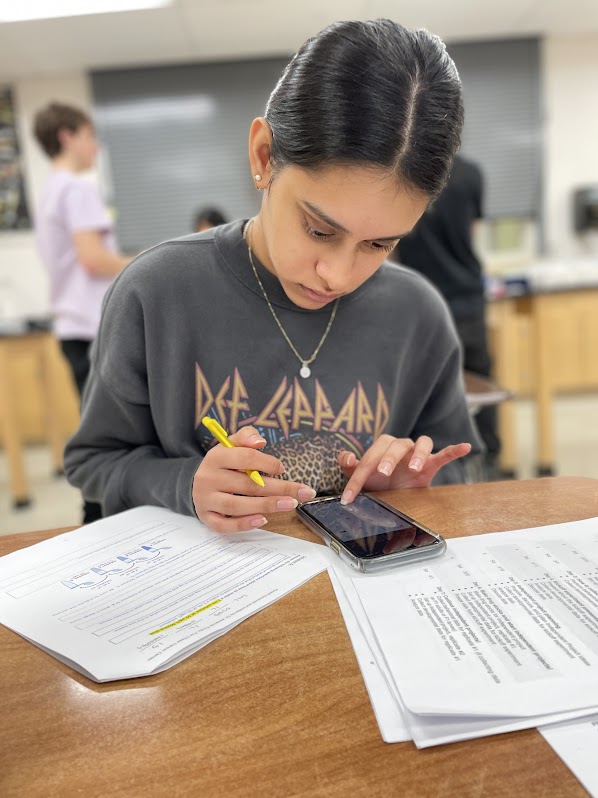
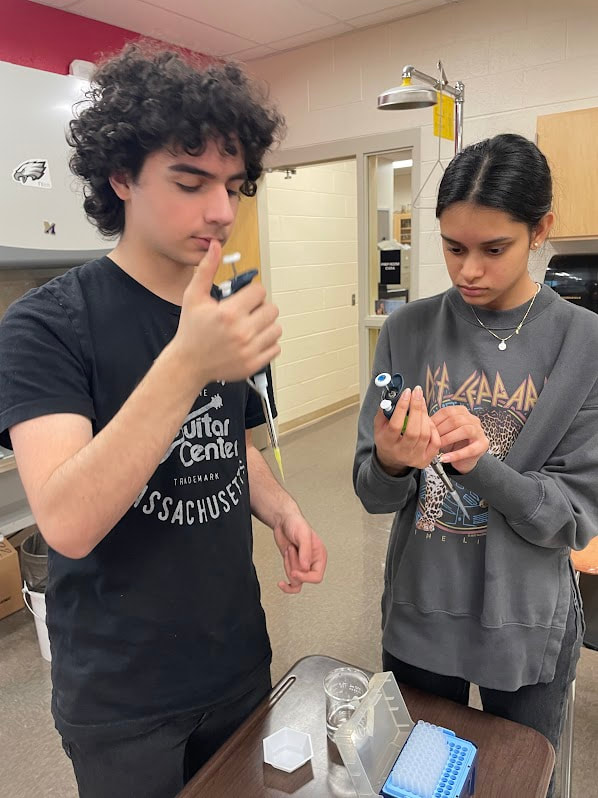

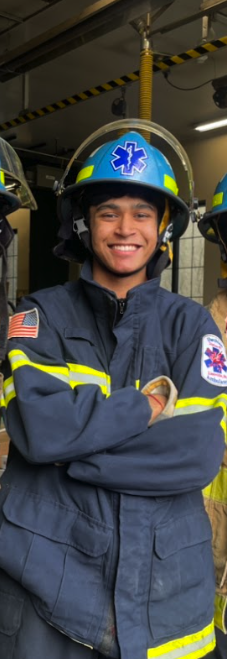
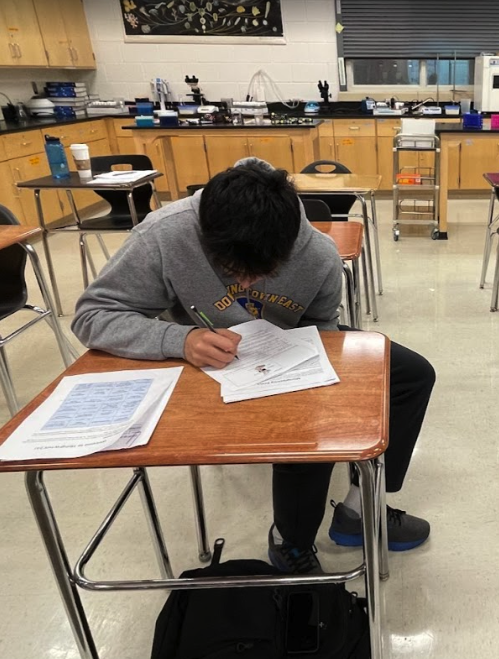
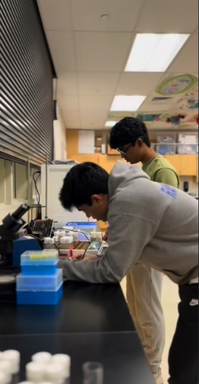
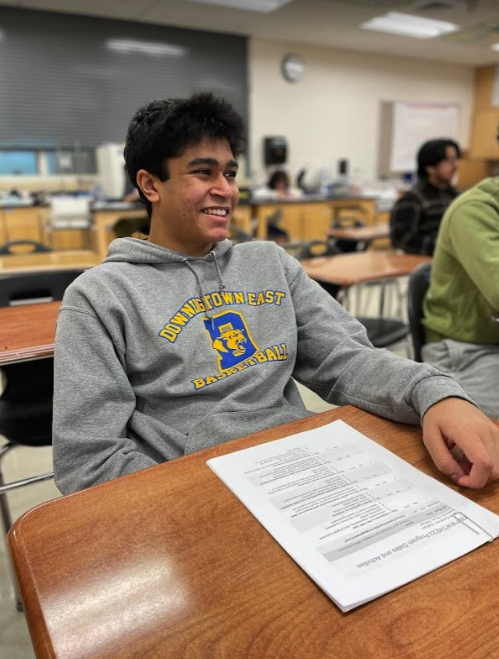
 RSS Feed
RSS Feed